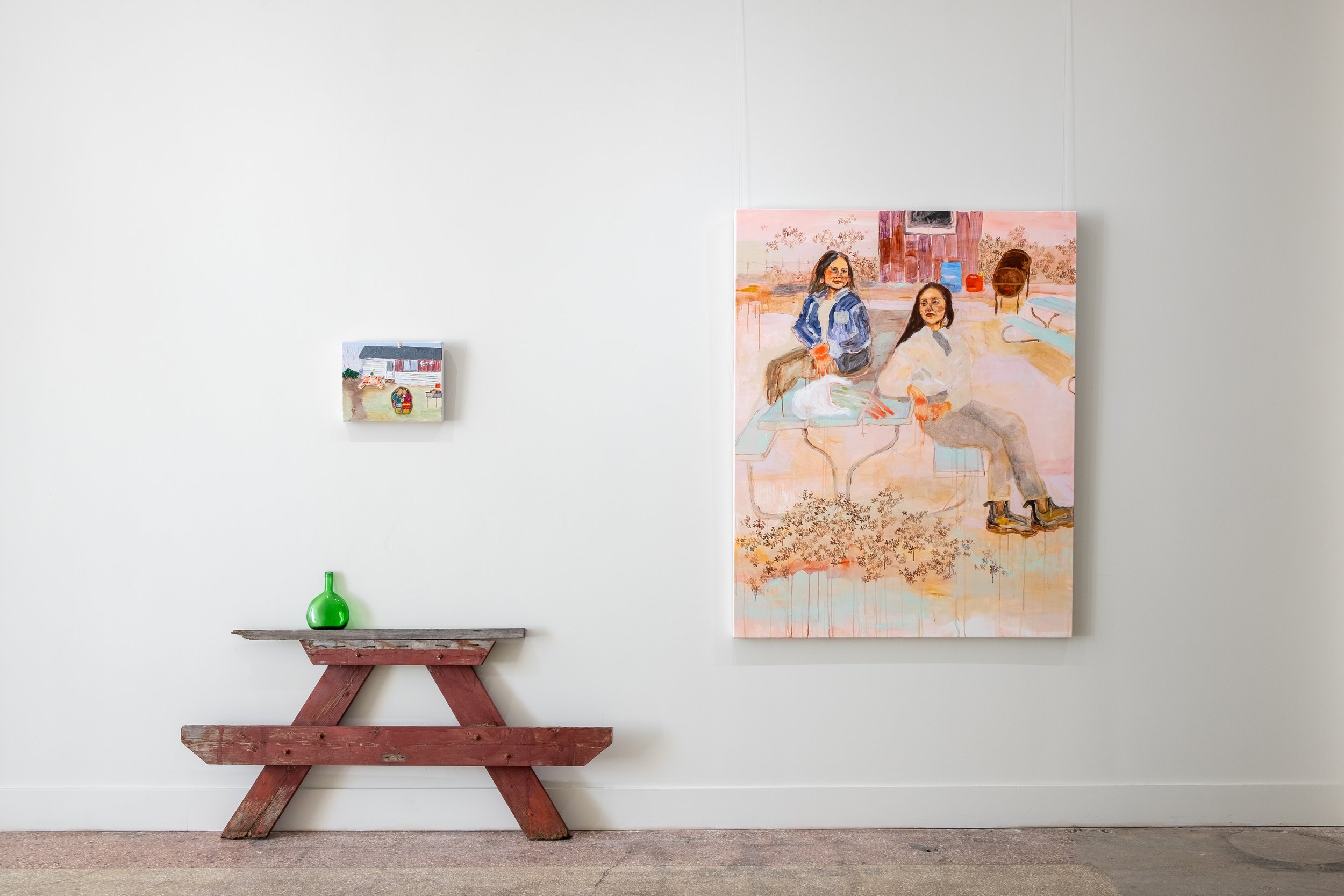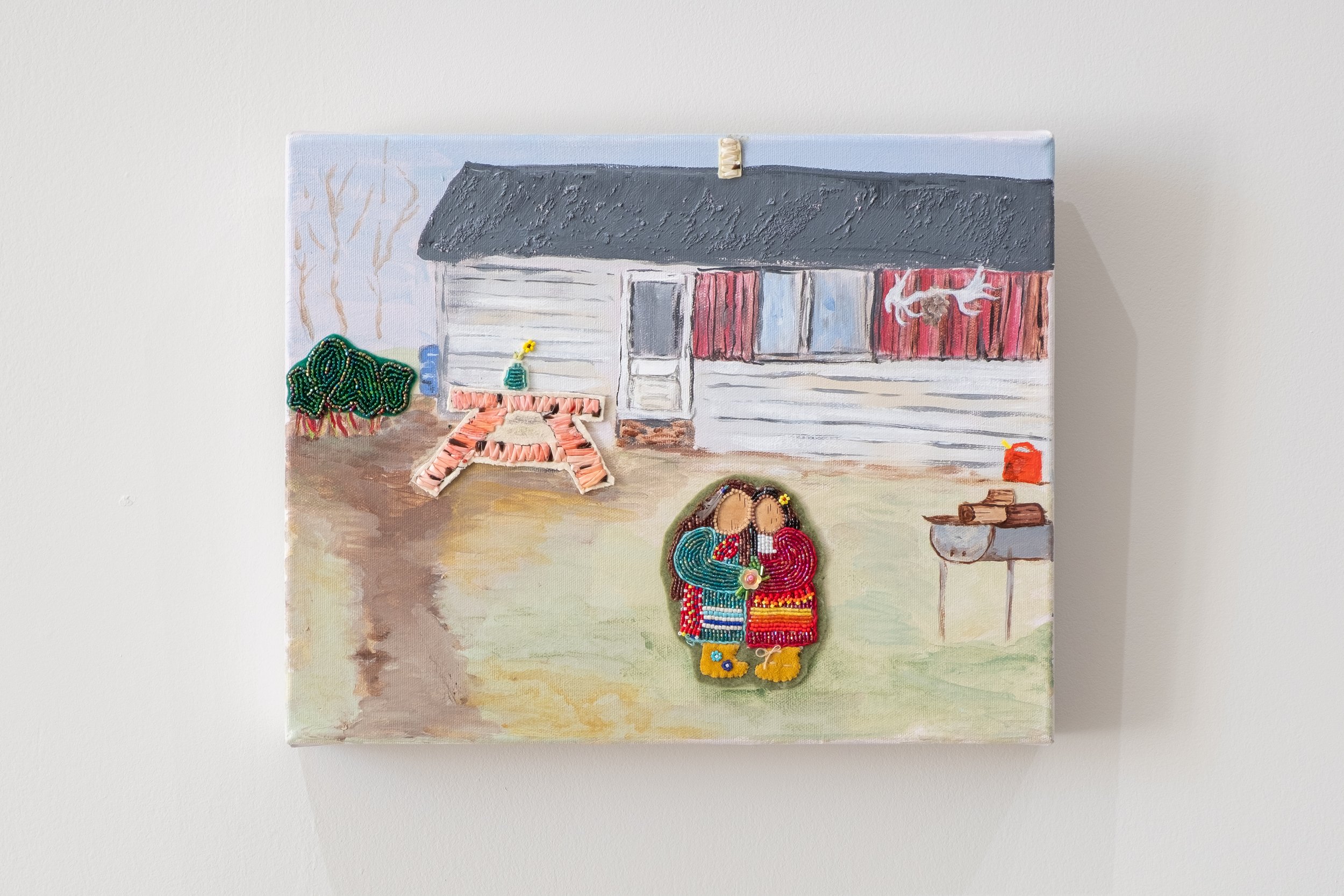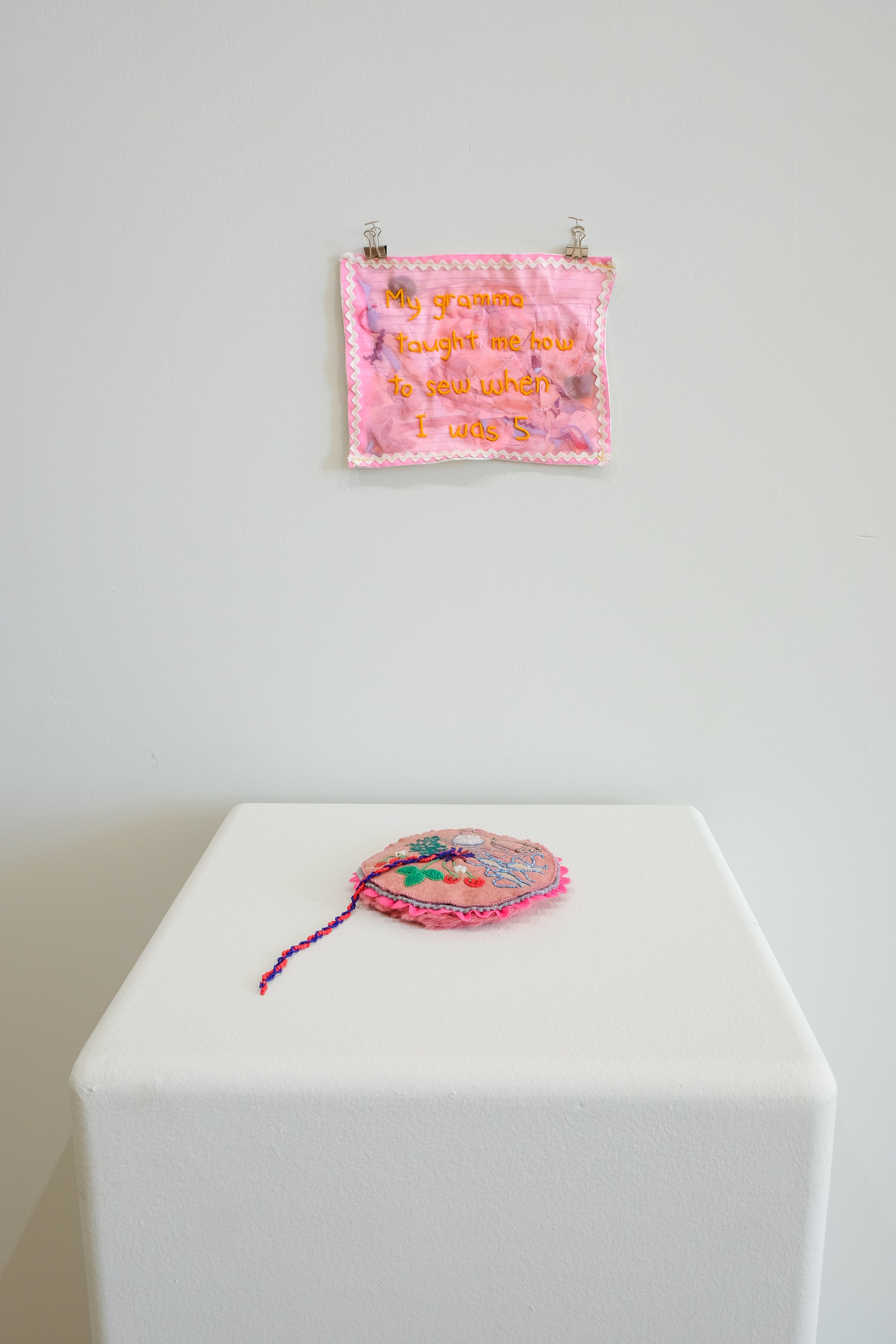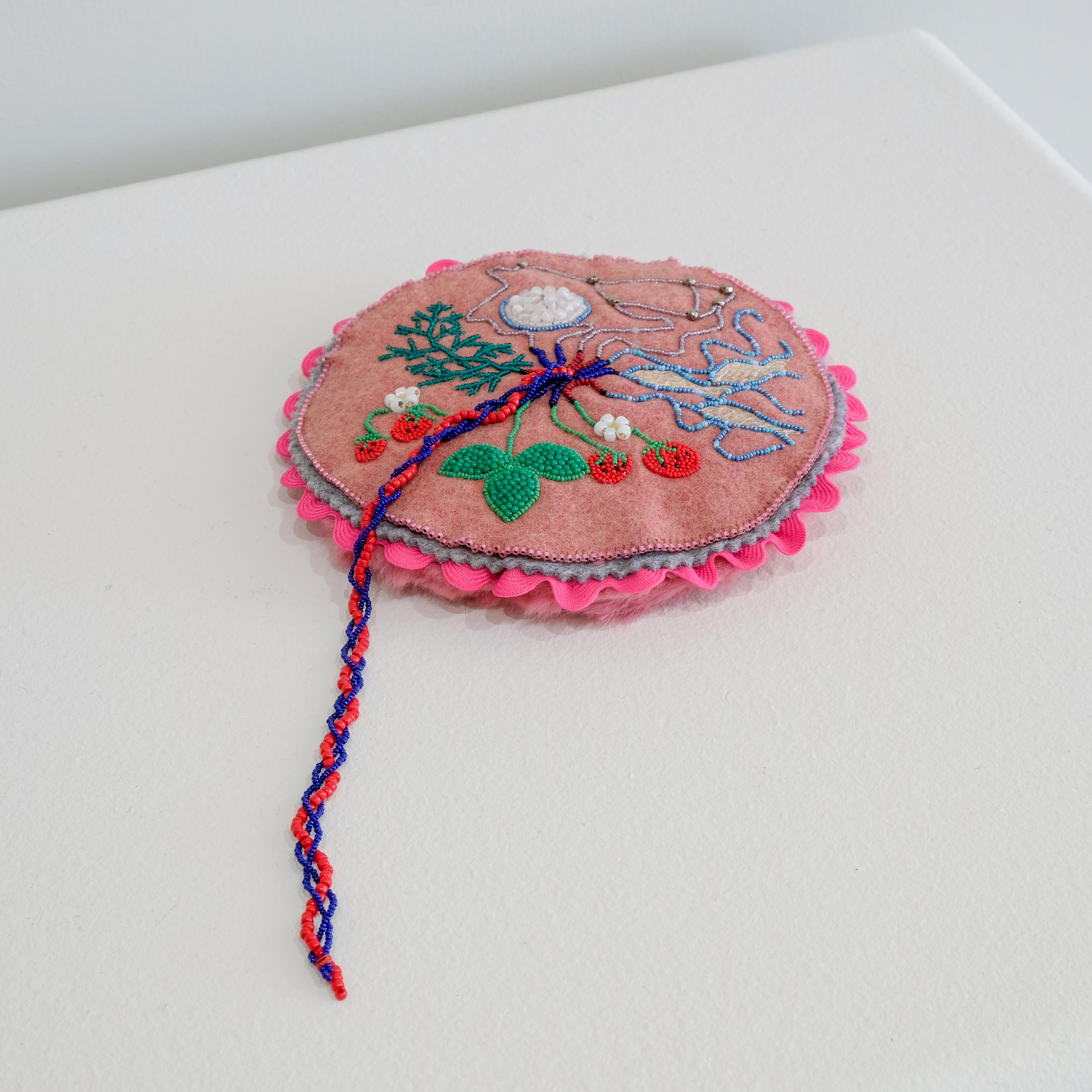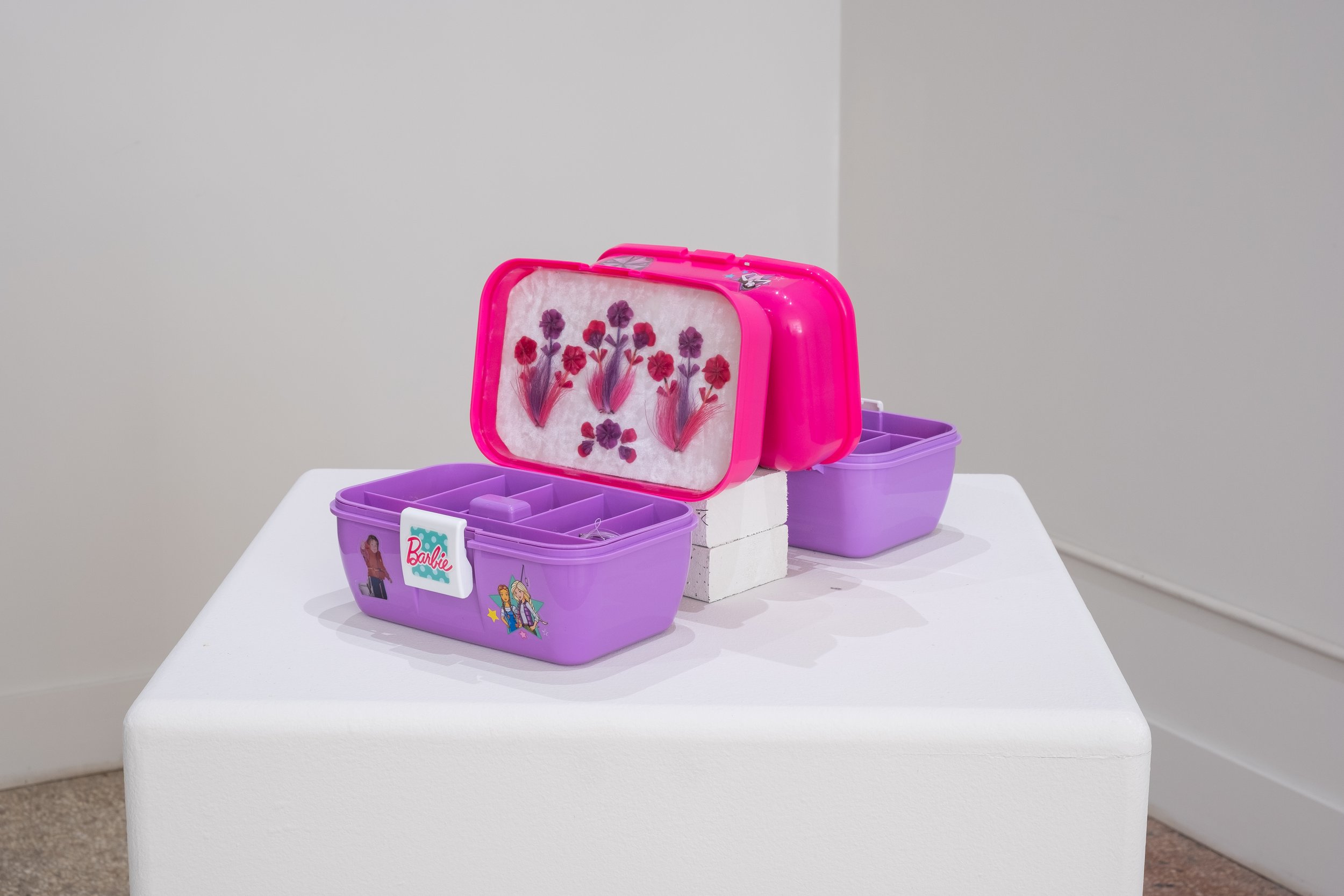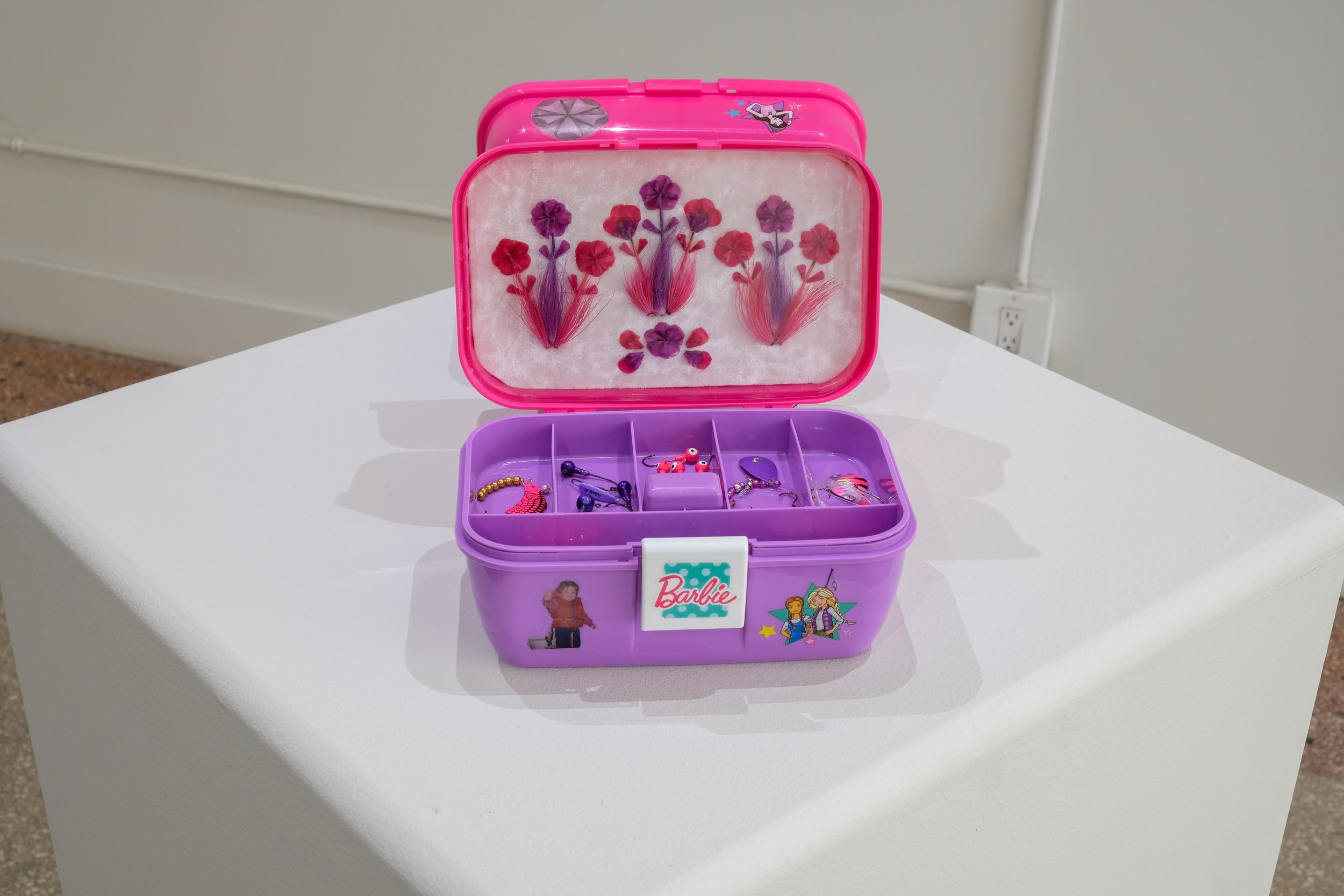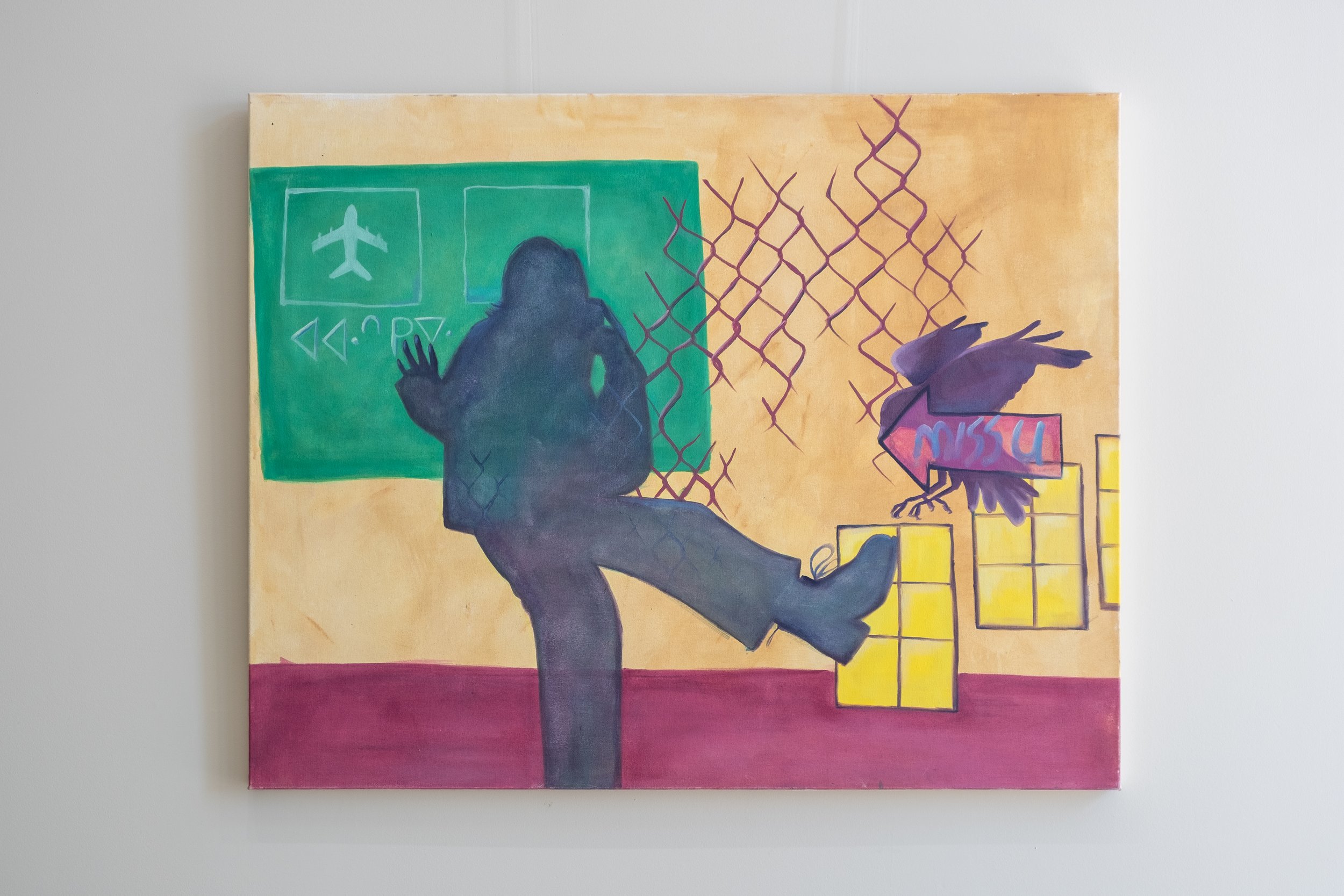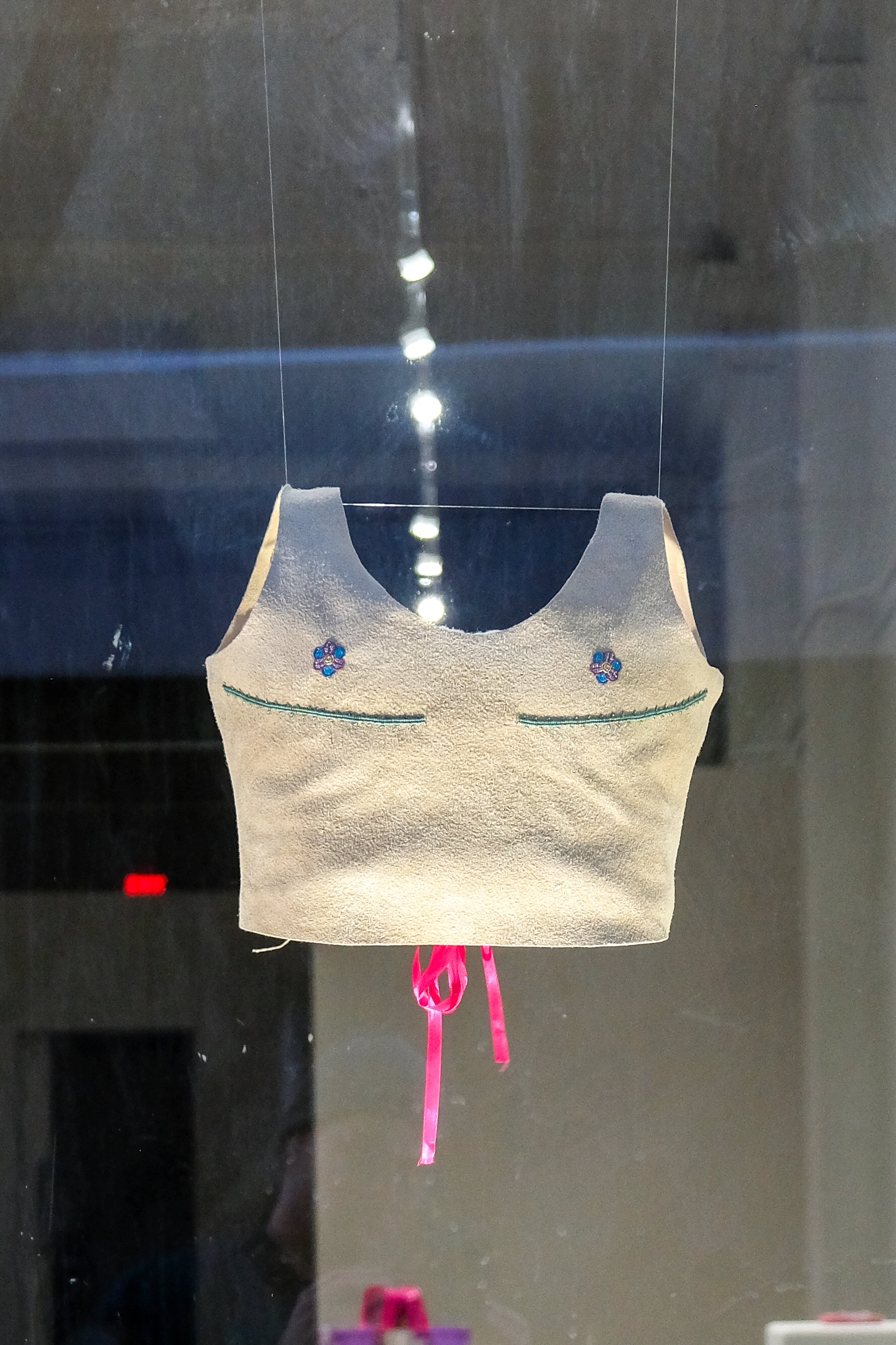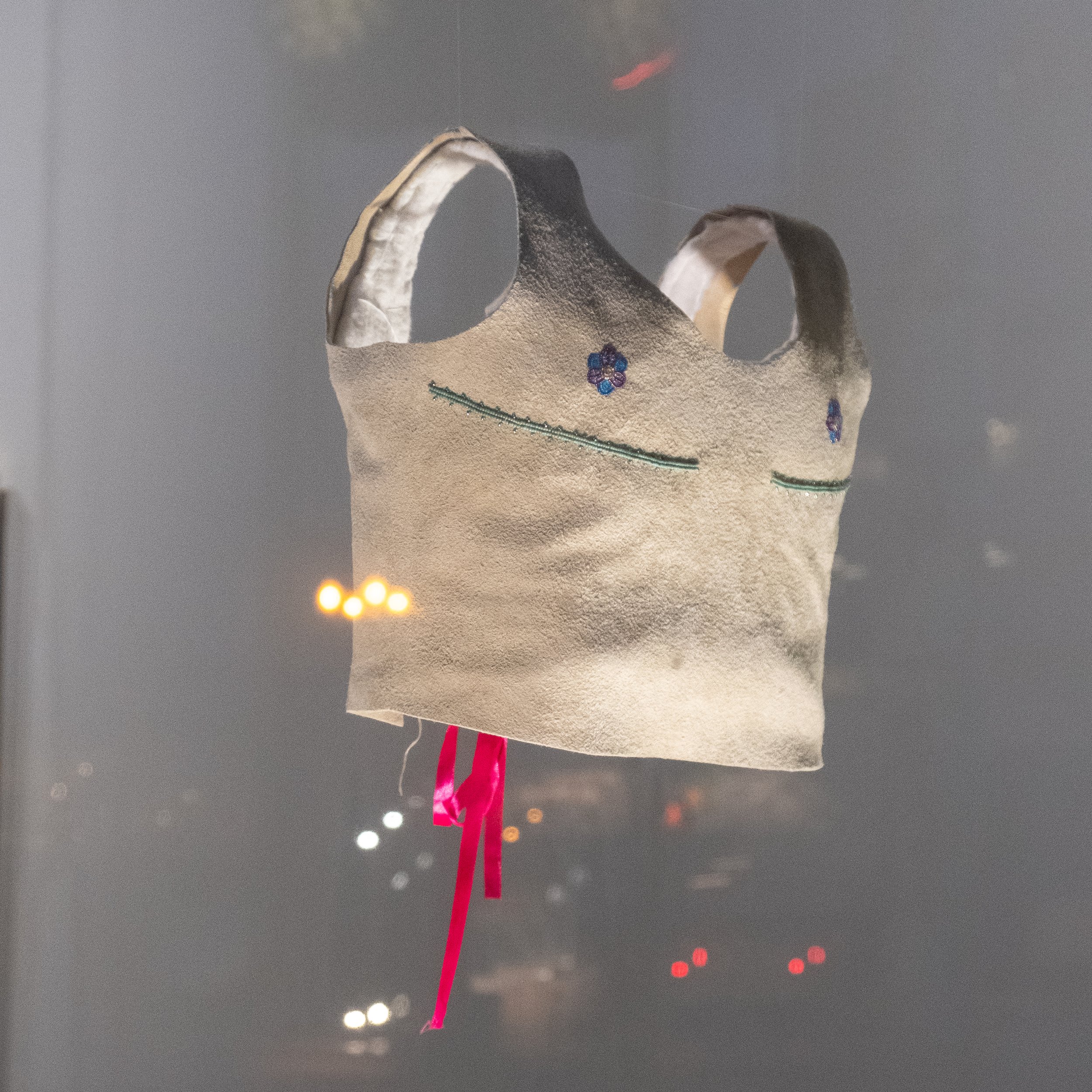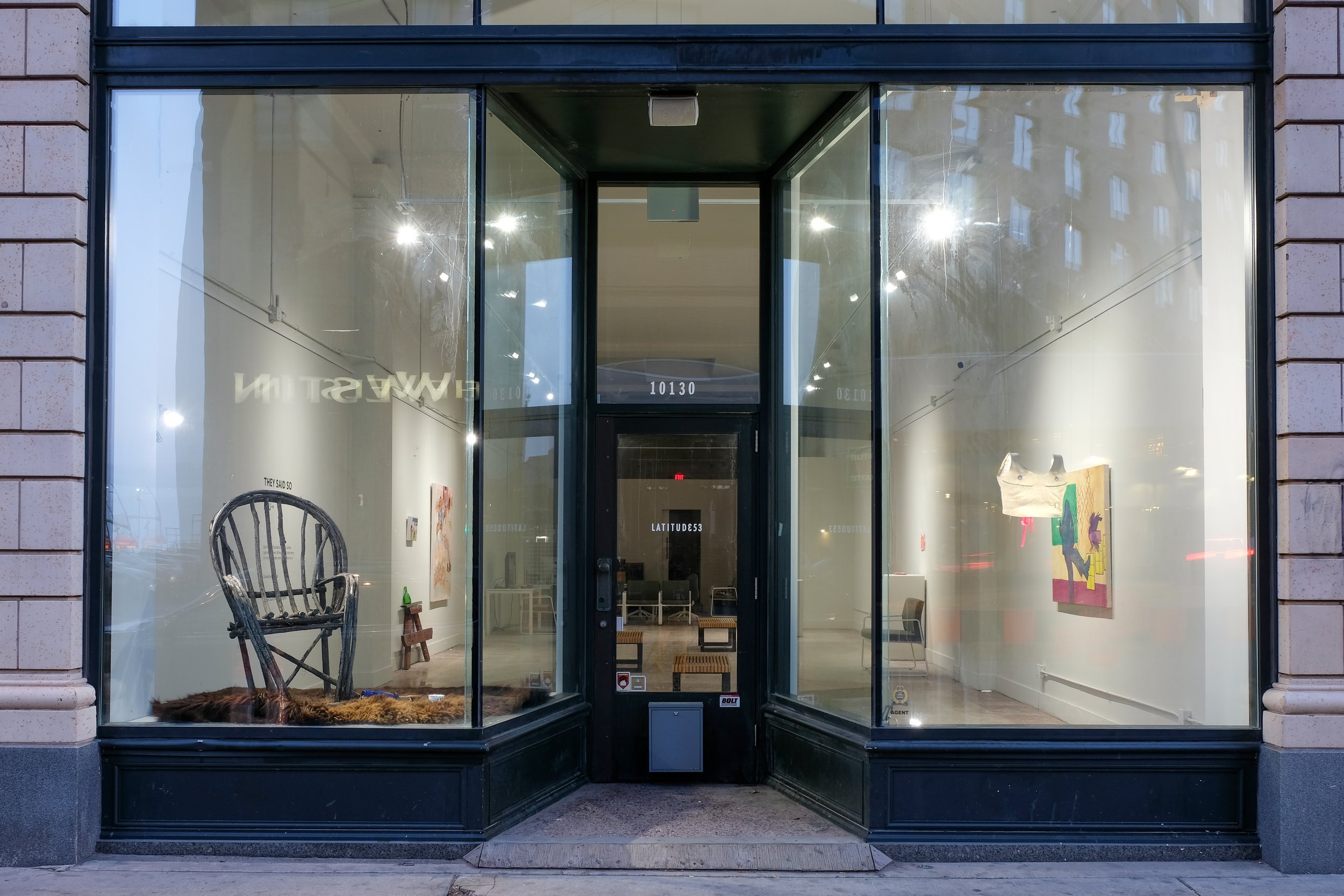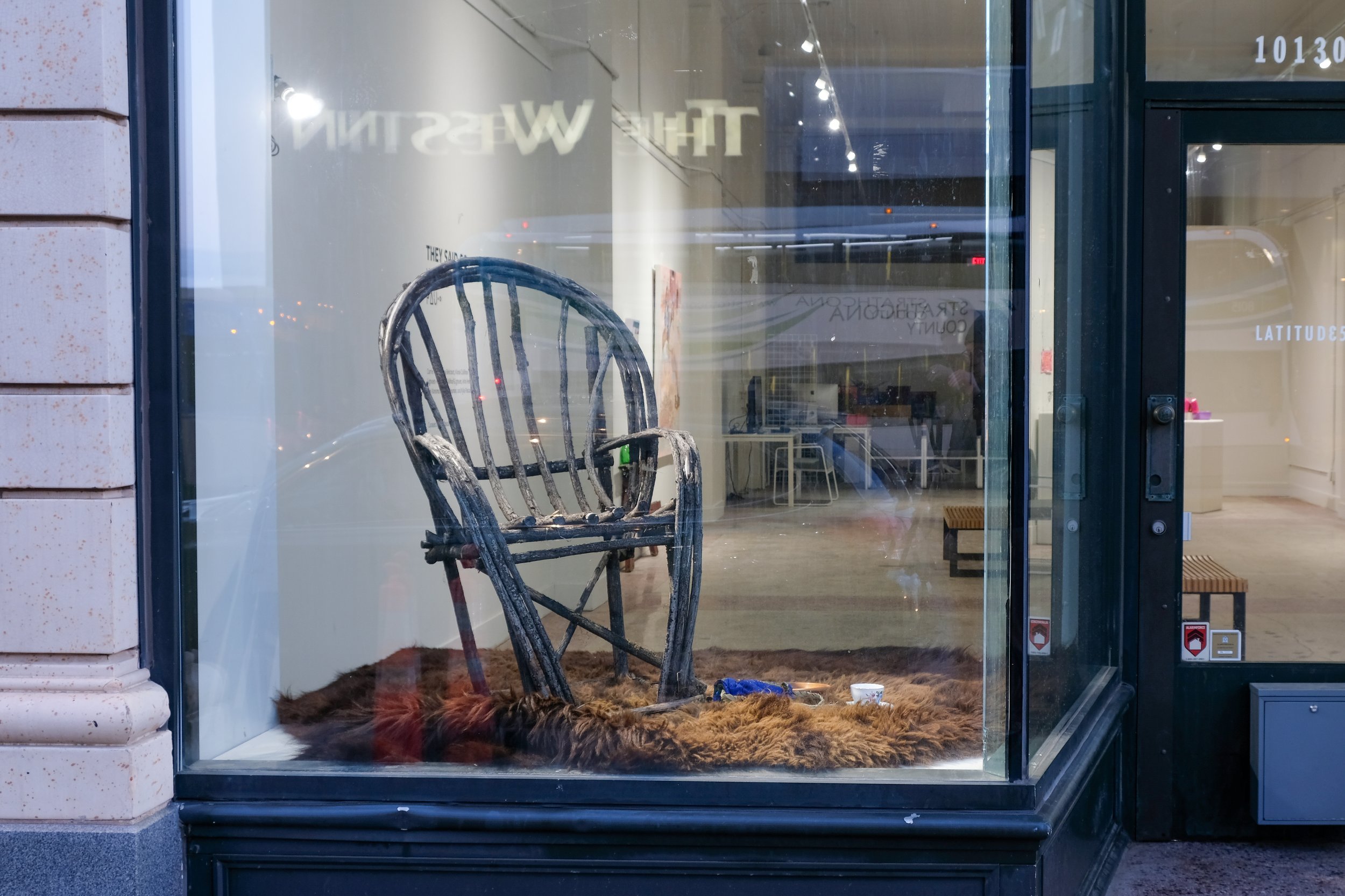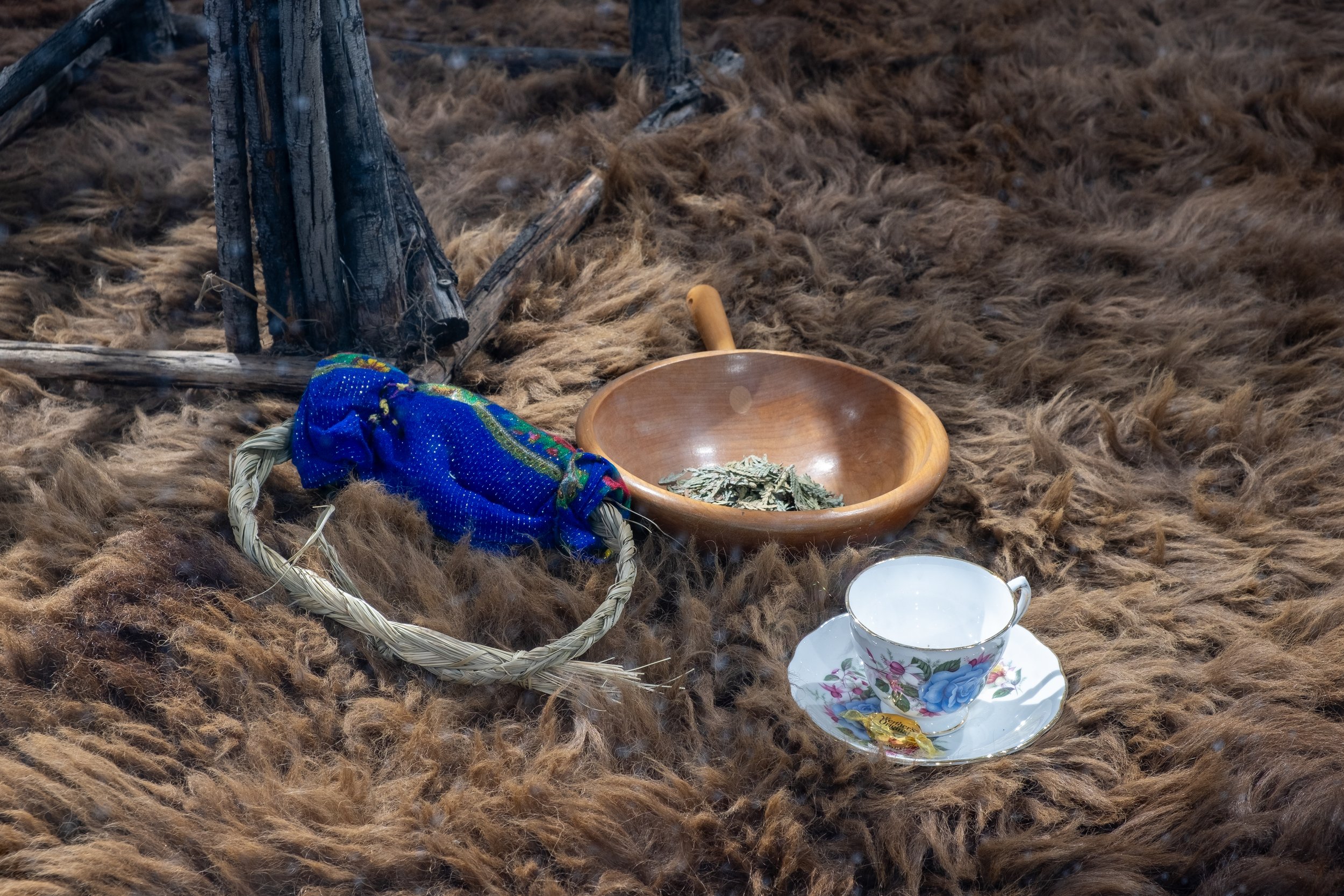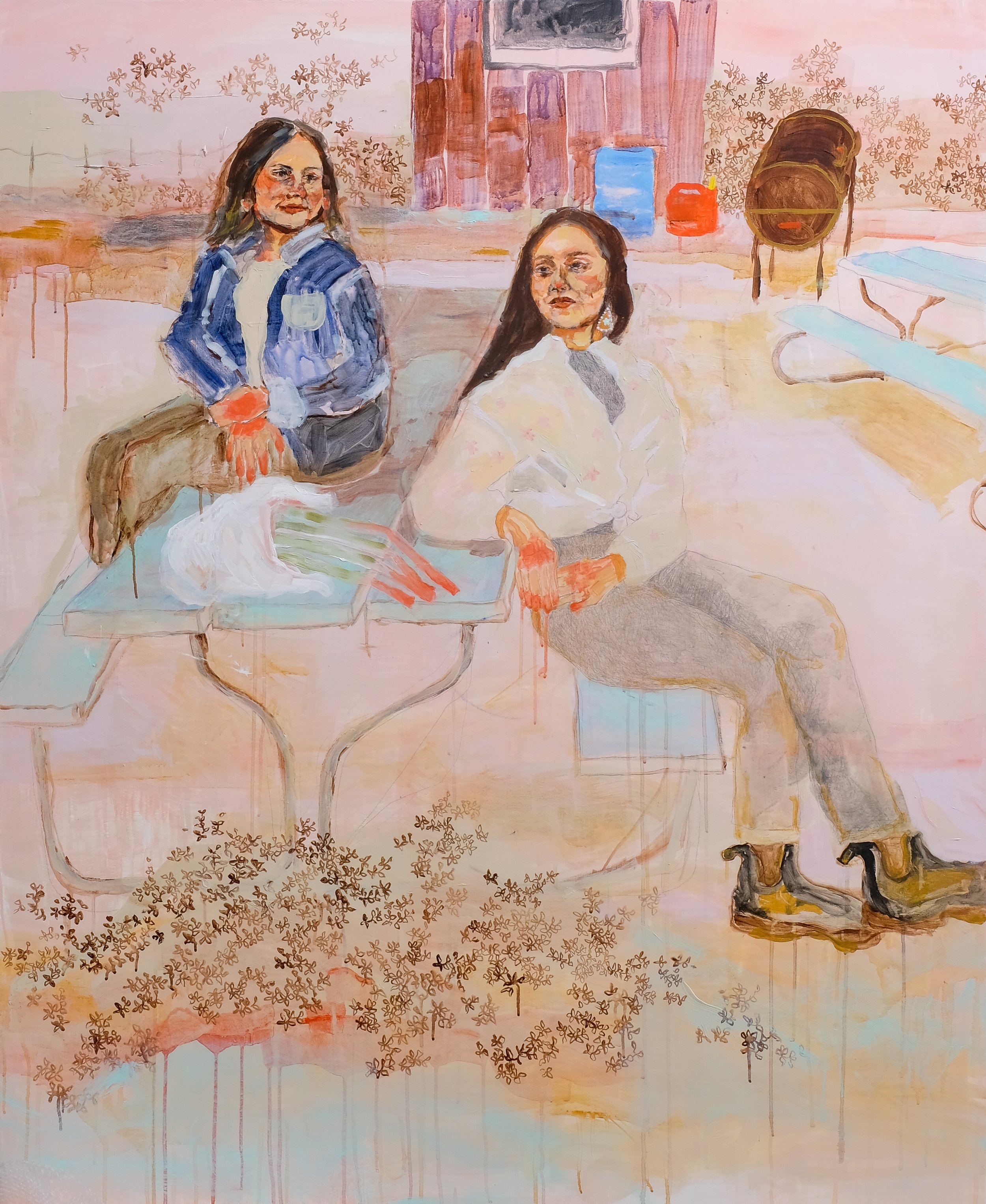They Said So
kî-itwêw
ᑮᐃᑌᐧᐤ
CURATED BY KYLA PASCAL
November 8 - December 16, 2023!
Opening Reception: December 8 , 7-10 PM (Members-only Event due to capacity)
Image: “Heart Piece”, Kiona Callihoo Ligtvoet, 4ft x 5ft, acrylic and graphite on canvas, 2023
FEATURED ARTISTS
Carrie Allison, Dana Belcourt,
Kiona Callihoo Ligtvoet + Maureen Callihoo
Ligtvoet, Arlo Henry,
Erin Konsmo, Candace NeumaNN,
and Kyla Pascal
Latitude 53 is pleased to open our new space soon in the McLeod Block downtown with an exhibition of new works by Métis artists, curated by Kyla Pascal. They Said So is a collection of stories from women, queer, and trans Métis artists, intimate accounts of their connection with place, and the ways they nurture and are nurtured by their families and themselves.
curatorial statement
They Said So explores and celebrates the Métis stories you won’t find in textbooks but rather the stories of the women, the queer and trans kin, the nurturers, and the knowledge keepers. The stories of those who tended the fires, who fed us, and kept us surviving.
This exhibition brings us closer to the land in our communities and the land where our ancestors once lived; we are sharing stories that pass through our lineage to future generations. Through the exploration of our own histories and culture we add to the existing knowledge deep in our marrow.
This exhibition belongs to all of us. We are not unique in the reality that our ancestors' stories have been lost or hidden from us. The seeking of histories, belonging, and resistance, is a similar story for many of us. These stories of longing and displacement are often intentionally minimized and dismissed. We use storytelling through art to validate that our ancestors existed, they led, nurtured, and carried. It is because of this that we exist, we lead, we nurture, and we carry.
They Said So is curated by Kyla Pascal and features the work of Carrie Allison, Dana Belcourt, Kiona Callihoo Ligtvoet, Maureen Callihoo Ligtvoet, Arlo Henry, Erin Konsmo, Candace Neumann, and Kyla Pascal.
Gratitude to Jacqueline Fiala, who, through long and late night conversations of art, shared histories, family stories, and Métis teachings, lit the spark that led to this exhibition.
We’d like to thank the Edmonton Heritage Council for their support in making this project possible, through their FIRE Grant program.
About the Artists
Carrie Allison is a nêhiýaw, Métis, and mixed European descent multidisciplinary visual artist based in K’jipuktuk, Mi’kma’ki (Halifax, Nova Scotia). She grew up on the unceded and unsurrendered lands of the Sḵwx̱wú7mesh (Squamish), Stó:lō, and Səl̓ílwətaʔ/Selilwitulh (Tsleil-Waututh) and xʷməθkʷəy̓əm (Musqueam) Nations. Her maternal roots and relations are based in Maskotewisipiy (High Prairie, Alberta), Treaty 8. Situated in K’jipuktuk since 2010, her practice responds to her maternal nêhiýaw and Métis ancestry, thinking through intergenerational cultural loss and acts of reclaiming, resilience, resistance, and activism, while also thinking through notions of allyship, kinship and visiting. Her practice is rooted in research and pedagogical discourses. Old and new technologies are combined to tell stories of the land, continuance, growth, and of healing.
About the work
Thinking through care work and my own lived experience of becoming a mother, My Moon is a beaded animation that visually depicts ‘a bead, a breath,’ a beaded stop motion animation. Combining two extremely slow practices, beading and stop-motion, to contemplate my lived experience of being an anxious new parent. When my son was born I was, as I imagine many mothers are, nervous and anxious about keeping him alive. I was constantly checking in on him, making sure he was breathing, monitoring his breath, and asking myself endless questions about his health and safety. I think this speaks to becoming a new parent but also to the anxieties that COVID-19 instilled in all of us (as well as the RSV cases that were rampant across the nation during the time). My Moon is a piece I made to cope with these anxieties. I would often record my son's breath while he was sleeping, listening to it and thinking how it changed from last week. This anxious practice was something I wanted to embrace and celebrate, especially as I grew more comfortable in my new mothering role. My Moon is a meditation on this time in my life when finding the time to make art was difficult but by working in beaded animation, which is an incredibly slow practice, I was able to make this piece in between feedings and while my son was sleeping on me.
Soundscape by: Jessie Beier
Dana Justine Belcourt (They/She) is a multidisciplinary mixed Cree/Métis artist from Amiskwaciwâskahikan, specializing in paintings, zines, and murals. Their work deals with themes of love, indigeneity, and relationships through symbolism, metaphors, and narratives. Their paintings tend to be focused on specific emotions and personal stories, while their murals and public pieces are often commemorating community experiences. Their zine work allows them to showcase their writing and journaling practice, which is emotive and sentimental. Overall, their pieces are highly personal, including small details and nuances that are elusive and secretive in nature. They hope for their work to be a lens into themselves, allowing others to see how they experience the world.
They’ve recently exhibited at Latitude 53 (2022), Emily Carr (2022, 2023), and Sâkêwêwak (2022), as well as completed murals in Edmonton (2021), and Vancouver (2022). They’re currently practicing on the unceded territory of the xwməθkwəy̓ əm (Musqueam), Sḵwx̱wú7mesh (Squamish), and səlilwətaɬ (Tsleil-Waututh) Nations. They completed a BFA at Emily Carr in 2023, and are currently an artist in residence at Skwachays Lodge.
About the work
“Awas/Kîwe/Miss U” was made based on walks I was going on in Vancouver while thinking about Edmonton. Often on walks, I would find myself noticing small details such as graffiti, a window with a light turned on, birds, and shadows. When I returned to the studio I’d think of my walk and try to remember the details I saw. This process was very meditative and helped keep me in the space I was growing into, while also acknowledging that I miss home. The full English title is “Go Away/Go Home/Miss U”.
Maureen Callihoo Ligtvoet is a painter and beadworker living and practicing art in amiskwaciwâskahikan on Treaty 6 Territory. Her family lines are Cree, Métis, Mohawk, and French, and she is a member of Michel First Nation. Maureen is also a cultural teacher and program facilitator with deep roots in the prairies. She maintains her own beading practice, consistently selling work out of the Musee Heritage Museum in St. Albert. Most recently, she was featured in UPPERCASE Magazine, Issue 49, and just completed a collaborative painting project with her daughter, Kiona; these pieces were acquired by The University of Alberta Faculty of Rehabilitation Sciences.
Maureen is a mother and an Indigenous birthworker, these journeys have informed her creative focus on children, joy, playfulness, and love. Her artwork is influenced by mothering relationships, and matriarchs through the mediums of painting and beadwork. Having not pursued formal education in the arts, Maureen looks to kokums, aunties, cousins, sisters, and daughters who hold strength in themselves as teachers. It’s a way she respects and remembers these lifegivers alongside herself. Her practice is storytelling and medicine to her own experiences; she hopes to pass this knowledge to her children.
Kiona Callihoo Ligtvoet (she/her) is a multidisciplinary artist practicing in amiskwaciwâskahikan on Treaty 6 Territory. She grew up West of the city near the hamlet of Calahoo where she lived with her relatives on scrip land. Her family lines are Cree and Métis descending from Michel First Nation, as well as Dutch and mixed European.
Kiona works in painting, printmaking, and drawing, recollecting personal stories of grief and tenderness. Her practice uses a non-linear telling of her memories through narrative work as a form of diaristic archiving. It draws from feelings of loss and enfranchisement, but also from deep belly laughter, and a gentle fondness for where the histories between herself and her family overlap and disperse. Working alongside other artists in initiatives of community care, Kiona co-organizes Making Space in partnership with Sanaa Humayun. She likes visiting her moshom on the farm, and gossiping with her mom, relatives, and friends on the prairies.
About the work
Heart Piece retells stories shared between mother and daughter in late summer heat. The last days of August open to cold mornings and hot days; visiting on the prairies outside of old bunkhouses that hold generations of relatives keepsakes; cutting overgrowth of rhubarb to stew over sweets for loved ones; family gossip to help us understand between generations and lineage; ancestors we didn’t get to know as aunties, but who we remember now; laughing loudly over clasped hands and chipped paint on picnic tables; we painted these a decade ago, there’s pieces of us here too.
Each work shares this same memory of afternoon harvest together as two parts, one painted and one beaded. We made these between ongoing conversations over dinner tables, shared studios, and visits home. Through inheritance we learn direction, joy, repair, and trust, accompanying us while we honor and receive each other's creativity and stories. This is where we’ve overlapped and learned from one another.
Arlo Henry is a beadworker and woodworker from Prince Albert, Saskatchewan, now living in Edmonton. They make clothing, accessories, furniture, and home decor, continuing the Métis tradition of useful items as art.
About the Work
I made this about a year into waiting for top surgery. The wait is ongoing.
Erin Konsmo (she/they) is an Alberta-raised Prairie queer of Métis (MMF citizen) and settler Canadian descent, visual artist, harvester & fisher, and community organizer based out of Winnipeg, MB. Their arts practice currently focuses on fish scale art; an art form they were mentored into by Métis artist Jaime Morse. This practice includes the use of lake whitefish scales to create florals as well as using macro photography and digital art to magnify the gifts from the fish by taking small-in-scale gifts and digitally scaling them up in size. She is also a textile artist, taking inspiration from her mothers sewing room and loves a good perusal through drawers full of fabric, rick rack, trims and lace.
In addition to her artistic practice, Erin is a reproductive and healing justice practitioner who works with somatic experiencing, embodiment, and sexual and reproductive health. In the winter months, they enjoy spending time ice fishing, processing the gifts from the fish and sharing the glamour and iridescence of fish scales. In spring and summer, Erin enjoys listening to frog songs, picking medicines, and canoeing to visit beavers.
About the Work
These tackle boxes are an ode to my childhood and explore girlhood and queer femme identity as a Métis harvester and fisher. They are the tackle box of my childhood dreams - pink and purple, embellished with delicate florals, and full of pink lures and jigs. The Barbie tackle boxes are a nostalgic return to playful memories of fishing as a child and the excitement of catching my first fish, and maintain continuity with my contemporary harvesting which defies patriarchy in femme splendour. As a direct challenge to patriarchy, misogyny and homo- and transphobia, these tackle boxes confidently lean into prettiness, playfulness, queerness, and femme identity.
The Barbie tackle boxes, jigs and lures connect fish scale art to the Métis harvesting practice of fishing. By embracing pink and purple themes, a femme fishing practice is centered in defiance of hegemonic perceptions of hyper-masculine fishing culture. This explicit use and repurposing of commercial, mass-produced fishing materials in combination with matriarchal Métis material culture calls viewers to consider the act of fishing, spending time on the water and the relationships we have to fishing stories as part of this fish scale artform.
Candace Neumann I am a Métis artist, student, doula, sundancer, cedar bath practitioner, community worker, and facilitator from Winnipeg, Manitoba. Beading and creating jewelry is a way for me to process the things I do, hear, see, and feel in my daily life. I mainly make jewelry that combines traditional techniques and materials with contemporary design, and materials. I am inspired by the work I do in the community and at school, songs, movies, my relationships, dreams, and ceremonies. I have literally dreamed of pieces that I was able to create in the real world.
My Grandmother taught me to sew when I was 5 years old. She made quilts entirely by hand. I would sit at her feet and thread her needles while she told me stories of her life.
About the work
bebii kosaen (baby pillow) -
The images on the piece are strawberry medicine, cedar medicine, the moon and seven sisters constellation, and water. Each of these things is connected to birthing bodies and birth work. The 3 strands of braided beads represent 2 veins and the artery that makes up the umbilical cord. This is the connection between parent and child. The medicines inside the placenta are the medicines used to care for a birthing and postpartum body.
Kyla Pascal (she/her) is an Afro-Indigenous (Dominican/Métis) woman born and raised in Amiskwaciwâskahikan / ᐊᒥᐢᑲᐧᒋᐋᐧᐢᑲᐦᐃᑲᐣ (Edmonton). Her experiences and interests are centred around Indigenous solidarity, cultural preservation, community health, and food justice. She is a social planner, artist, and co-editor of Hungry Zine.
About the Work
Visiting Grandmothers was inspired by those who came before us. Sitting at the feet of our relatives while they share stories, gossip, and teachings. It is an homage to the work, the care, the crafts, and the ceremony that they imparted on us that shape who we are today.
